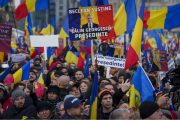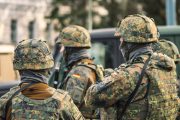
Approximately 16,000 residents on the island of St. Vincent have been ordered to evacuate after multiple eruptions of the La Soufrière volcano. But according to Prime Minister Ralph Gonsalves, only people vaccinated against the COVID-19 virus will be allowed to board cruise ships that have been enlisted to assist in evacuation efforts.
The “only those vaccinated” order may have come from neighboring countries, which have volunteered to house some of the volcano refugees, including St. Lucia, Grenada, Barbados, and Antigua. St. Lucia does not insist on a vaccination to come, but may require one upon arrival.
As Gonsalves said: “If people are willing to welcome you at a time of COVID-19, they will wish you to have the highest level of protection possible.”
Cruise-ship personnel will apparently be in charge of who gets a seat off the island.
“The chief medical officer would be identifying the persons who are already vaccinated so that we can get them on the ship,” said Gonsalves at a Saturday press conference.
“The ships do not have enough personnel, at the moment, to keep people on the ships,” an emotional Gonsalves explained. “But they have enough personnel to transport persons to these destinations.”
And there will be no quickly getting the vaccine and jumping on the ship, either.
“You would [not] want to send them immediately after vaccination, you’d want to hold them and keep them for a day or two because some persons upon vaccination they develop … a little wooziness in the head.”
Gonsalves lamented that the nation had to go through a natural disaster while a pandemic was still ongoing: “We have to manage all of this during the time of COVID-19,” the prime minister told a local NBC affiliate. “We have managed the pandemic quite well. We’ve only had ten deaths.”
The first vaccines only arrived in St. Vincent and the Grenadines last week through the COVAX facility, a joint operation of the Coalition for Epidemic Preparedness Innovations, the vaccine alliance Gavi, UNICEF, the Pan American Health Organization, and the World Health Organization.
There has been no official word on how many residents of the island have received the vaccination thus far.
St. Vincent is the primary island of the nation of St. Vincent and the Grenadines, which lies in the West Indies at the southern end of the Caribbean Sea. The nation’s population is approximately 110,000, approximately 15 percent of whom are in immediate danger from the La Soufrière volcano, which last erupted in 1979. Some 1,600 people lost their lives in an earlier eruption event in 1902.
Experts are warning that eruptions could continue for days or weeks. Thus far, the eruptions have caused power and water outages, as well as a thick layer of volcanic ash that is beginning to harden on the ground. The Friday eruption caused an ash plume approximately six miles high.
NEMO, the country’s National Emergency Management Organization, reports that the northern portion of the island resembles a “battle zone” with rains causing the fallen ash to harden.
NEMO’s Facebook page offers a good idea of what’s happening on the ground on St. Vincent in the so-called Red Zone, which is the most dangerous portion of the island.
Still, many in the nation prefer not to evacuate despite the dangers. In one politician’s point of view, it’s because they fear the vaccine more than the volcano.
Opposition politician Shevern John has said, “People are very scared of the vaccine and they opt out of coming to a shelter because eventually they would have to adhere to the protocol.”
According to Gonsalves, it could be at least four months before those refugees can return to their homes.





